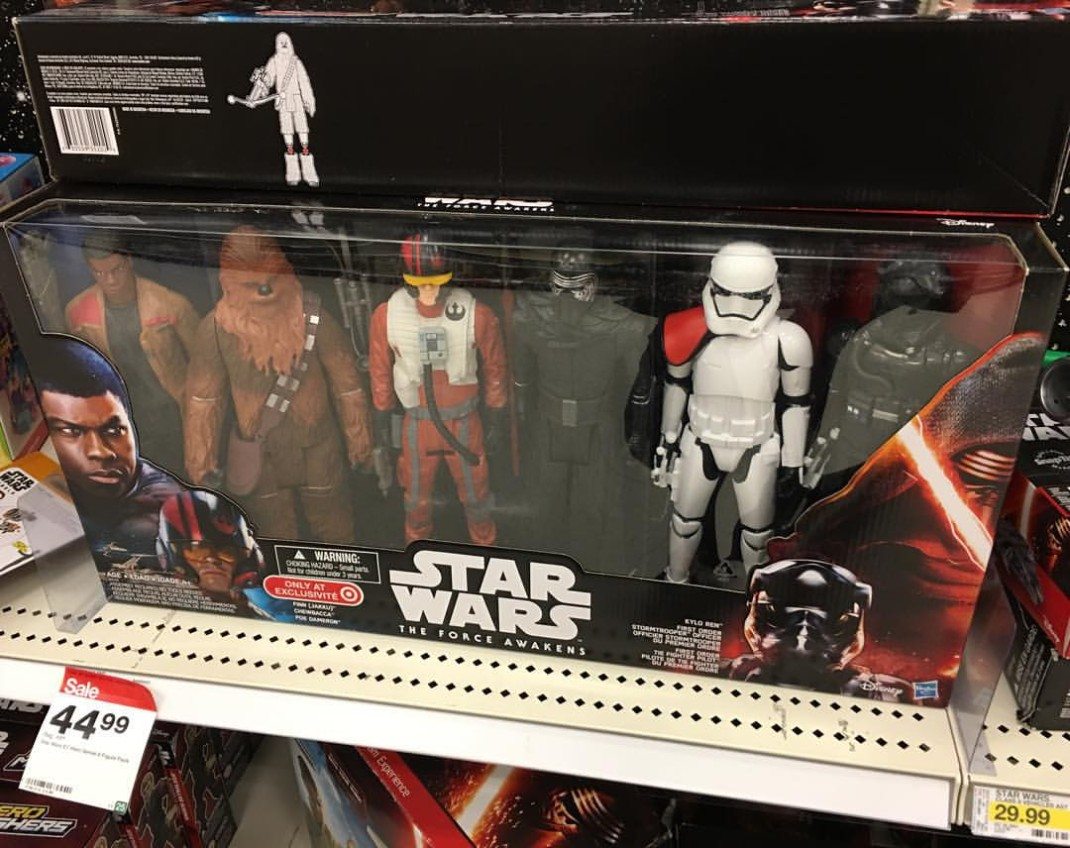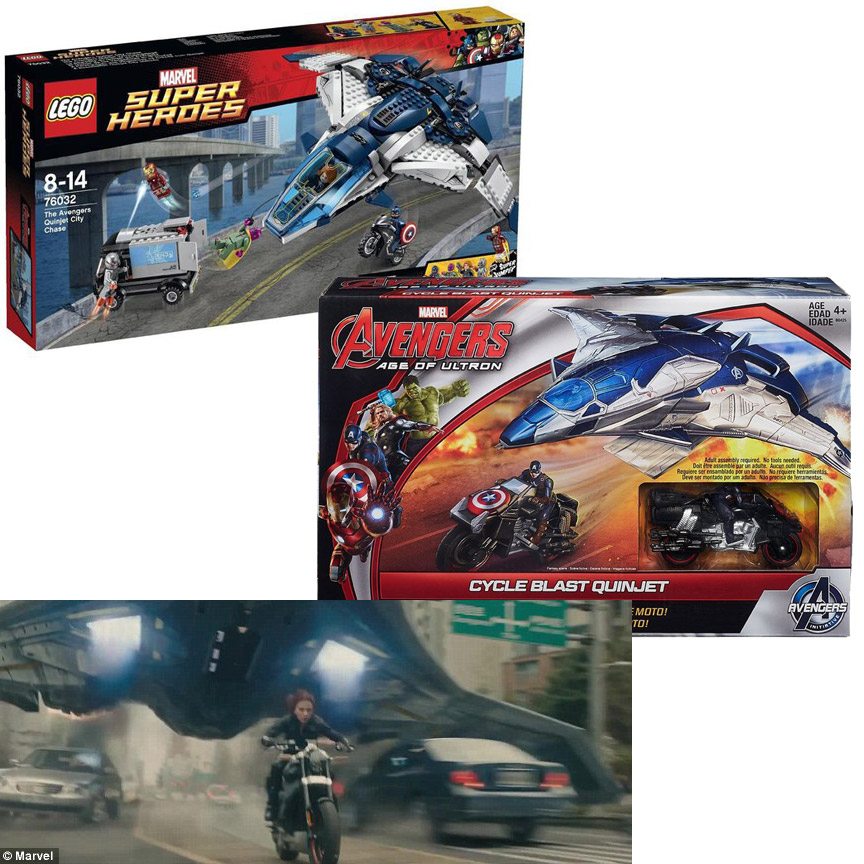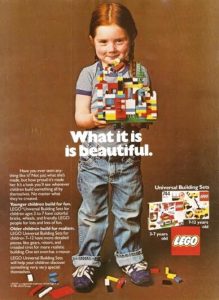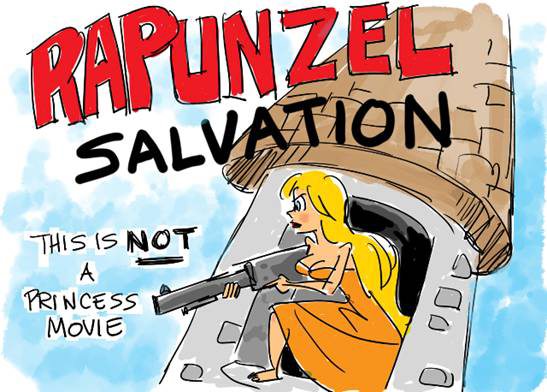
The question is, what’s going on here? The obvious answer is sexism and misogyny, but the fact is, that’s more an effect than cause. It’s really not about representation. It’s about spreadsheets and demographics and market segments.
Let’s take Disney as an example, since they own most of the major properties in question. Within the Disney corporate structure, there are many departments, and each of them is expected to generate revenue and contribute to the bottom line. The various production divisions (Feature Animation, Motion Pictures, TV, etc.) make the movies, cartoons, TV shows, and other content, and the Licensing department sells products based on them. The goal for each department is to maximize sales.

For the entertainment department, their approach is to include something for everyone; humor, action, romance, drama, to cast as wide a net as possible. The toy business takes the opposite approach; they go for specialization and segmentation, marketing different lines of products to carefully-defined audience groups, such as young children, boys age 8-12, girls age 8-12, teen girls, teen boys, and adult men and women, also broken down into age groups. They are very aware that men over 50 don’t buy the same things as men under 30, and neither of them buy the same things as women of any age. And vice-versa.

Until very recently, this specialization theory included some universally held beliefs about what boys and girls wanted and would accept. Most of these focused on what boys would reject. For most of the 20th century, social boundaries dictated that boys were expected to firmly reject anything that was seen as for younger children (“baby stuff”) or for girls; letting it be known that you like either of these things was an invitation to harassment, condemnation, and rejection, and boys understood it very well. Beginning in the 1980s, toy manufacturers grabbed this notion and made it a rigid rule, and exacerbated the problem by adding gender signifiers (pink and purple for girls, black and red for boys) to formerly gender-neutral toys.
For some time, there’s been a tug-of-war within Disney between the licensing and production departments. Some years ago, Disney licensing deliberately created the “Disney Princesses” line as a way to lean into the gendering of the toy aisles and sell a lot of stuff to little girls. They also cherry-picked Tinkerbell out of the Peter Pan story and created the “Disney Fairies” brand. These branding programs were hugely successful, but they were directly in conflict with the studio’s “our movies are for everyone” philosophy. In marketing the toys, they also accidentally re-branded most of Disney’s back catalog as “girl movies.”

As licensed merchandise became a bigger part of the revenue pie, the marketing segmentation policy was imposed, at least to a degree, on the production end. The unfortunate result is that audiences no longer look at movies like Beauty & the Beast as children’s movies or family films; The Little Mermaid is a “princess movie” and The Lion King isn’t. This means that if Disney wants to attract the whole family to a movie, it can’t look even slightly like a “princess” movie; if it does, it has to have a bland gender-neutral name and an ad campaign that hides the female characters. For examples, see Frozen’s ads that focused on the snowman and reindeer, and Tangled’s Flynn-centric campaign. Both of these films got their titles because of the paralyzing fear that “Snow Queen” and “Rapunzel” are too close to “princess.”




Great article explaining the entire perspective on the matter, as frustrating as it is. My 3-year-old girl is in full Star Wars fever, but it looks like I’ll have to settle for the Rey costume and her end-of-movie weapon instead of the figures going for triple and quadruple prices online.
You should check Amazon…. There are actually more Rey figures and toys than there are of any other character and they are not priced up. The stores are carrying them too, however they are selling out quite quickly.
The problem here though is that Rey is not another Black Widow Situation. I understand everyone’s frustration with not being able to find Rey toys in stores, however this is mostly due to the demand overwhelming the stock. Simply put, stores are selling out quickly. A quick Google search or even a look on Amazon will tell you that there are actually more Rey toys than there are for any other character in TFA. She is left out of one box set, but is included in 2 other sets. She also has 2 different pop vinyl figurines, 2 different individual 6 inch figures, a plush, a Disney Infinity Playset, a Lego figure, and much more. These toys are currently available on Amazon for the same reasonable price found in stores. And with the high revenue coming in due to the demand for these toys, I suspect that the toy market for female characters will soon change.
Agreed. My 5-yr old is learning all about Star Wars and the Marvel Characters, and while she loves and recognizes many of the male characters, she also looks to the female characters as “Cool” and likes to pretend that she is them. I also noted this in the Miles from Tomorrowland series! They have a strong and intelligent female character, Loretta (his big sister) but try to find any shirts, hats, bags, or toys that specifically reference her and you will find a severe lack of them. My daughter LOVES Loretta and she is taking an interest in STEM fields because Loretta can do Computer Programming, uses her Bracelex to identify all sorts of things. She is very Tech-y and it makes me happy that my daughter looks at Loretta as a role model. But she cannot get a cool Loretta Callisto Sweatshirt to show off her Role Model.
More needs to be done to bring the strong, intelligent, and fun female characters to the marketing departments and get some stuff out there for me to throw more money at!
I understand the frustration, and I may have a (small) fix. Get a picture of the character your girl loves. Get some transfer paper, the instructions are on it how to use it, and make her a shirt. If you can’t find one to buy, make it yourself. I’ve done it and will continue to do it! Good luck! !
Disney “Princess” wise, it hits me how recent that change is – Mulan was a “family film” and that’s 1998.
It’s Lilo & Stitch in 2002 that keeps Lilo off the posters and early teasers in favour of Stitch, and even that specifically used “princess” characters in marketing, assuming you’d all seen these films.
And THEN there’s:
https://en.wikipedia.org/wiki/The_Princess_and_the_Frog#Box_office
“Looking back on the experience four years later, Catmull candidly acknowledged that Disney had made a “serious mistake” in the process of marketing and releasing the film.[70] The Walt Disney Studios’ marketing department had warned Disney Animation that the word “princess” in the title “would lead moviegoers to think that the film was for girls only,” but the animation studio’s management insisted on keeping the “princess” title because they truly believed that the film’s excellent quality and beautiful hand-drawn animation would bring in all quadrants anyway.[70] In Catmull’s words, this belief “was our own version of a stupid pill.”[70] The marketing department turned out to be correct in their prediction that many moviegoers would and did avoid the film because they thought it was “for little girls only.”[70] This error was further compounded by the fact that the film opened only five days before Avatar.[70]”
Thank you for telling the story of licensing in a way that doesn’t make the men and women who make these products look like mustache twirling bad guys with an agenda to make little girls lives boring.
I think at a bare minimum, the license-holders can and should insist that boxed sets like the ones shown here accurately reflect the importance of the characters. If Gamora or Black Widow is on the team, they should be in the box and on the t-shirt. The notion that “boys won’t buy the set if there’s a girl in it” is nonsense. Many boys are completists and sticklers for accuracy and would much prefer it if all the major characters are included. This nonsense is rapidly becoming an anachronism.
Here here!
It’s insane to think that a boy wouldn’t want that set because one girl character was in it. Didn’t that boy go see The Force Awakens and love it so much that he wanted the toys? And wasn’t the main character and hero of The Force Awakens a girl? So why wouldn’t the same logic apply to the toy sets? Sure, maybe the Rey toy on it’s own wouldn’t sell as well to boys as Poe or Finn or stormtroopers, but it would sell extraordinarily well to girls, who i’m sure are huge fans of TFA *because* Rey is the hero and is an awesome character. I was 9 when Star Wars came out in ’77, and i got many of the toys that Christmas, including a Princess Leia action figure. Maybe i didn’t play with her as much as i did the stormtroopers or Chewbacca, but she was always there, playing her part. And it never entered my mind that i shouldn’t want to play with her because she was a girl. She was just a cool character from the movie that i loved. End of story.
You say effect, not cause, but that, by your own article, is wrong.
Either the spreadsheets and statistics are wrong, and then the people making decisions off them are making them on either dishonest or biased principles, in which case sexism is the cause.
Or the spreadsheets are correct, and it is the institutionalised sexism in the buying population that renders mixed toy sets unsellable.
I think it’s a symbiotic death spiral. Marketing grabbed on to a bit of demographic data, which they then exploit, in the process further encouraging and increasing the demographic phenomenon (like the retroactive rebranding of “Princess” movies), which then is absorbed into the culture (like the disappointing performance of “the Princess and the Frog” and subsequent deceptive packaging of “Frozen” and “Tangled”), which further entrenches the marketing philosophy and strengthens the gender divide in the toy aisles, which then further exacerbates the gender divide in society, until it gets to the point that toy manufacturers think they have to deny the existence of any female characters in order to sell a set of team characters, because of the two-pronged marketing shibboleth that “boys won’t play with anything that’s even slightly ‘girly’ and girls won’t play with ‘boy toys’,” neither of which is actually true. Which came first is a chicken-and-egg debate, but the key point is, nobody at Disney, Hasbro or Target is sitting at a table suggesting ways to deliberately screw over the girls in the audience; it does not start with overt sexism, but that’s where it ends up.
Spoiler alert…Rey was the hero in this film so it’s bizarre that there’s not more of her in the toy world. I know my daughter would like it.
There’s also this official explanation: “Disney contacted BuzzFeed, confirming that some Rey figurines were held out of stores until after the movie was released as they contain moderate movie spoilers. Disney noted that a new wave of Rey products will be available in January.” http://www.buzzfeed.com/andyneuenschwander/where-is-rey
The problem here though is that Rey is not another Black Widow Situation. I understand everyone’s frustration with not being able to find Rey toys in stores, however this is mostly due to the demand overwhelming the stock. Simply put, stores are selling out quickly. A quick Google search or even a look on Amazon will tell you that there are actually more Rey toys than there are for any other character in TFA. She is left out of one box set, but is included in 2 other sets. She also has 2 different pop vinyl figurines, 2 different individual 6 inch figures, a plush, a Disney Infinity Playset, a Lego figure, and much more. These toys are currently available on Amazon for the same reasonable price found in stores. And with the high revenue coming in due to the demand for these toys, I suspect that the toy market for female characters will soon change.
I saw that Rey will now be included in the Monopoly game. It would be nice if they sell a separate Rey figure for those of us who have already bought the game.
Black Widow’s flying the Quintet in the Lego set you show.
Yes, but the stunt being portrayed in the set was done by Black Widow. Replacing her with Captain America on the motorcycle remains the problem, and it’s indicative of the mindset behind it.
HEY THERE’S NO HAN EITHER??? BB8… C-3p0 either
Based on what characters are in that set it looks like the designer was going for a “Vs.” theme. Finn vs. Kylo. Poe(x-wing pilot) vs. Tie-fighter pilot. Chewie vs. Storm Trooper. Which were specific instances from the movie. Now, saying that, they could have substituted Ray for Finn or Captain Phasma for the generic storm trooper. Would it have spoiled the movie had they put Rey in this set with Luke’s lightsaber? The trailers did show her shooting at Kylo Ren with the blaster but the whole lightsaber duel was supposed to be a surprise. Though they probably could have included her staff and the blaster instead and it would have been fine.
Speaking as a former store clerk (preschool-aged toys), I’ll go with the “institutionalised sexism in the buying population” problem. The Sesame Street characters who always moved the slowest were Zoe, Rosita, and Abby, and that’s probably because of all the times I heard mothers tell their sons “You can’t have that; it’s a girl toy.” Boys or girls could take home an Elmo or Cookie; only girls were allowed to take those three.
Well, two of those three. Nobody wanted Rosita.
The problem you describe has gotten a lot more pronounced since the marketers and manufacturers began adding gendered markings to toys in order to sell multiple products to the same family. They’ve taught parents to think in terms of “girl toys” (pink) and “boy toys” (everything but pink).